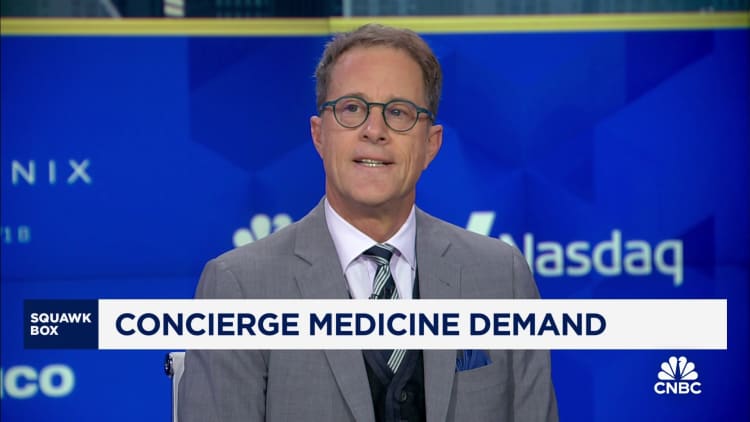Momo Productions | Digitalvision | Getty Images
First, the good news: Americans are living longer than they used to.
Now, the bad news: Older Americans are spending more years in poor health. That dynamic often comes with negative financial consequences, medical and financial experts say.
Since 1960, the average U.S. life span has increased to 77.5 from roughly 70 years old, according to the Centers for Disease Control and Prevention.
But “health spans” are simultaneously shrinking.
A health span is the number of years older people spend in fundamentally good health, said Susan Roberts, a professor of medicine and epidemiology and senior associate dean for foundational research at Dartmouth College.
Today, the average person spends about 10 years with chronic ailments like diabetes, cancer, arthritis, cardiovascular disease, dementia, cataracts or osteoporosis — roughly double the duration in the 1960s, Roberts said.
As a result, there’s a “widening gap” between one’s life and health spans, she said.
This is because medicine has gotten better at keeping sick people alive, though not necessarily treating them, Roberts said. Obesity, which is an underlying cause of many chronic diseases, is also more widespread, she said. Obesity affects 42% of U.S. adults, according to CDC data released in 2021.
How health impacts wealth
Fatcamera | E+ | Getty Images
The concept of a health span is “increasingly important” for a household’s finances, said Stacy Francis, a certified financial planner based in New York and member of CNBC’s Advisor Council.
Adults are spending more time “living a life where they’re not in their best state,” said Francis, president and CEO of Francis Financial. “And it results in significant expenses.”
About 90% of the nation’s $4.5 trillion in annual health care costs are for people with chronic diseases and mental health conditions, according to the CDC.
Medical costs get “worse and worse” once people have a chronic ailment, Roberts said.
More from Personal Finance:
Credit card spending growth is slowing
Crypto relationship scams pose ‘catastrophic harm’
What to do with RMDs when you don’t need the money
The average 65-year-old retiring this year will spend about $165,000 in out-of-pocket health and medical expenses in retirement, up 5% from 2023, according to Fidelity Investments.
Out-of-pocket treatment costs and early retirements due to poor health are two big ways chronic conditions impact households financially, experts said.
Early retirement might mean claiming Social Security earlier than expected — perhaps resulting in a lower monthly benefit, said Carolyn McClanahan, a physician and CFP based in Jacksonville, Florida.
“A person’s health directly impacts their wealth — and this connection becomes even more acute as people age,” Susan Silberman, senior director of research and evaluation at the National Council on Aging, said in a 2022 briefing.
Of course, this isn’t to say healthy people avoid significant medical expenses.
They may ultimately pay more over the long term relative to an unhealthy individual if they need long-term care, for example, which can be costly and more likely with age, said McClanahan, the founder of Life Planning Partners and a member of CNBC’s Advisor Council.
Plus, healthy people experience more “go-go” years, meaning they can travel and spend on fun things, she said.
Invest in yourself
“When you are in your 40s and 50s, it’s the point of no return,” McClanahan said.
If adults don’t start tending to their health by this age, they become more susceptible to chronic diseases like diabetes and high blood pressure, which can lead to sudden issues like strokes and heart attacks, she said.
Treat purchases of healthy food, gym memberships or exercise classes as an investment in yourself, said Francis. Prioritize the spending on your health and, if it feels like too much money, try to cut back on spending that “doesn’t increase your health span,” she said.

“I think of that like an investment I put in my 401(k),” Francis said.
“Those extra dollars … will add years to your life and you’ll make up for it,” she said.
More than half of people can reverse a diabetes diagnosis by losing 10% of their weight within the first seven years of that diagnosis, Roberts said.
The “biggest tragedy” of chronic ailments is that “they’re preventable,” Roberts said. A few dietary tweaks — eliminating sugary drinks like soda and juice, and eating small, healthy snacks like an apple — can make a “dramatic difference,” she said.
“Learning to like healthy foods is actually not that difficult,” Roberts said. “Practice it for a couple weeks and be patient with yourself.”






